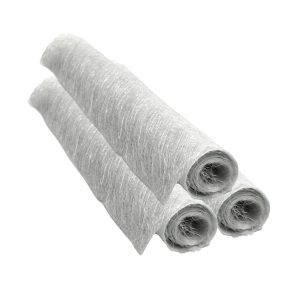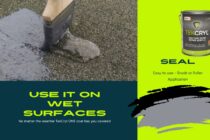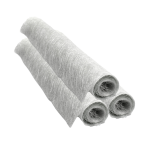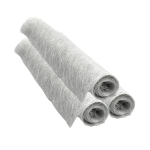Fiberglass or Fibreglass?
What’s the difference?
“Fiberglass” and “fibreglass” are both correct spellings of the same word. “Fiberglass” is the American spelling, while “fibreglass” is the British and Canadian spellings. Both spellings are widely accepted and commonly used in their respective regions. Ultimately, the spelling you choose may depend on your personal preference or the conventions of the audience you are writing for.

Fiberglass, or glass-reinforced plastic (GRP), comes in different grades, which refers to the thickness and quality of the fiberglass material. The different grades of fiberglass are classified based on the number of glass layers per inch (also known as “ounces per square foot”), and the type of weave used.
Here are some of the most common grades of fiberglass:
- 1.5 oz. Chopped Strand Mat (CSM) – This is the most basic grade of fiberglass and is commonly used for small repair jobs or as a base layer for larger projects. It is made of chopped strands of glass that are bonded together with a binder, and is typically used with polyester or vinyl ester resin.
- 2 oz. CSM – This grade of fiberglass is slightly thicker than 1.5 oz. CSM and is commonly used for medium-sized repairs and as a base layer for larger projects. It provides better strength and durability than 1.5 oz. CSM.
- 3 oz. CSM – This is a heavy-duty grade of fiberglass that is commonly used for large-scale repairs and as a structural layer for boat hulls, automotive parts, and other applications that require high strength and durability.
- Woven Roving – This is a type of fiberglass that is made of long, continuous fibers woven into a grid pattern. It is much stronger and more durable than CSM, and is commonly used as a reinforcement layer for boats, cars, and other high-stress applications.
- Combination Mat – This is a combination of CSM and woven roving, and is commonly used for a variety of projects, including boat hulls, automotive parts, and other applications that require strength and durability.
Variations of fiberglass
In addition to these grades, there are also variations of fiberglass that are specifically designed for certain applications, such as marine-grade fiberglass, which is designed for use in saltwater environments.
The grade of fiberglass you choose will depend on the specific needs of your project. Thicker grades of fiberglass provide greater strength and durability, while thinner grades are better suited for smaller repairs or as a base layer for larger projects. It’s important to choose the right grade of fiberglass for your project to ensure the best results.
A-glass
is commonly used in applications that require high strength and durability, such as in the manufacturing of high-performance composites, such as aircraft components, automotive parts, and sporting goods. It is also commonly used in the construction industry for the reinforcement of concrete and other building materials.
Compared to other types of fiberglass, A-glass has a higher tensile strength and modulus of elasticity. This means that it is more resistant to deformation and has a greater ability to resist bending or breaking. It is also more resistant to chemical degradation and is less likely to deteriorate over time when exposed to alkaline or acidic substances.
While A-glass is a high-performance material, it is also more expensive than other types of fiberglass. Its unique composition and manufacturing process result in a higher cost than other types of glass fibers. However, for applications that require high strength, durability, and resistance to chemicals, A-glass is often the preferred choice.
C-glass
is a type of fiberglass that is made from a specific type of glass composition. The “C” in C-glass stands for “chemical,” which refers to the type of glass used to make the material. C-glass is made from a mixture of silica sand, soda ash, limestone, and other minor ingredients, which are melted together to form glass fibers.
C-glass has a moderate level of strength and durability, and is commonly used in a wide range of applications, including the manufacturing of boats, cars, and other transportation equipment, as well as in the construction industry for reinforcing concrete, roofing materials, and insulation.
Compared to other types of fiberglass, C-glass has a lower tensile strength and modulus of elasticity. However, it has a higher resistance to impact, which makes it a good choice for applications that require resistance to physical damage. C-glass is also known for its good electrical insulation properties, making it useful for electrical applications.
C-glass is less expensive than A-glass and E-glass, but more expensive than S-glass. Its moderate strength and durability, combined with its affordability, make it a popular choice for a wide range of applications. However, for applications that require high strength or chemical resistance, other types of fiberglass may be a better choice.
E-glass
is a type of fiberglass that is made from a specific type of glass composition. The “E” in E-glass stands for “electrical,” which refers to the type of glass used to make the material. E-glass is made from a combination of silica sand, soda ash, and other minor ingredients, which are melted together to form glass fibers.
E-glass is the most commonly used type of fiberglass and is known for its high strength, durability, and electrical insulation properties. It is commonly used in a wide range of applications, including the manufacturing of boats, cars, and other transportation equipment, as well as in the construction industry for reinforcing concrete, roofing materials, and insulation.
Compared to other types of fiberglass, E-glass has a high tensile strength and modulus of elasticity, making it highly resistant to bending and breaking. It is also resistant to chemical degradation, making it a good choice for applications that require resistance to chemical exposure.
E-glass is less expensive than other high-performance types of fiberglass, such as S-glass and A-glass, but is more expensive than C-glass. Its high strength and durability, combined with its affordability, make it a popular choice for a wide range of applications.
Overall, E-glass is a versatile and widely used type of fiberglass that offers good strength, durability, and electrical insulation properties. It is a good choice for applications that require a combination of these properties, as well as for those that require resistance to chemical exposure.
Where can you purchase fiberglass?
Composite Roof supplies offer 3 grades of Fibreglass matting 300g 450g 600g
- Fibreglass matting 450g




